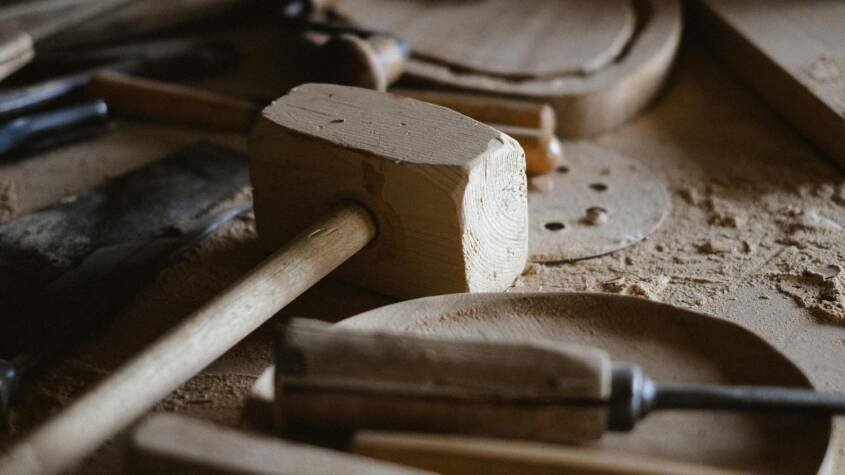
The blacksmith hammer is a fundamental tool in the craft of metalworking. It is used primarily for shaping and forging metal, providing the necessary force to mold materials into desired shapes. Various types of blacksmith hammers are available, each designed for specific tasks, making it essential for both beginners and experienced smiths to choose the right one for their projects.
Understanding the different styles and their applications can enhance one’s skills and efficiency in the forge. For example, a cross-peen hammer is ideal for drawing out metal, while a claw hammer excels in flattening. Knowing these nuances can significantly impact the quality of the finished piece.
Venturing into blacksmithing without the right hammer can lead to frustration and poor results. Selecting the appropriate hammer is crucial not only for the craft itself but also for ensuring safety and comfort during the forging process. With the right tool in hand, creativity and craftsmanship can flourish.
History and Evolution of Blacksmith Hammers
Blacksmith hammers have evolved significantly through various historical periods. The development of techniques and materials has enhanced their design and functionality, reflecting the changing needs of metalworkers.
Ancient Techniques
In ancient civilizations, blacksmith hammers served essential roles in metalworking. Early hammers were often simple tools made from stone or hardened wood. As metallurgy advanced, blacksmiths began crafting hammers from wrought iron.
These hammers typically featured a flat face for striking and a tapered end for shaping metal. The weight and balance were important in achieving effectiveness and reducing fatigue during long working hours. This basic design laid the groundwork for future innovations.
Medieval Improvements
During the medieval period, blacksmith hammers underwent significant improvements. New forging techniques allowed for more robust hammers, often incorporating materials like steel. The rise of specialized blacksmiths led to the creation of different hammer types tailored for specific tasks.
Hammers became heavier, improving their striking power. The introduction of the peen—a rounded or chisel-like end—enhanced the ability to shape metal more precisely. This increased versatility made hammers indispensable tools in trade and warfare.
Industrial Revolution Advances
The Industrial Revolution marked a pivotal shift in hammer design and production. With the advent of machinery, mass production became possible, allowing for standardized hammers. These tools were often made from high-carbon steel, which provided greater durability.
The introduction of drop hammers and power hammers revolutionized blacksmithing. Blacksmiths could now shape metal with greater speed and precision. This era also saw the rise of specialized hammers, such as the cross-peen and ball-peen, designed for specific applications in automotive and construction industries.
Types and Uses of Blacksmith Hammers
Blacksmith hammers come in various types, each designed for specific tasks in metalworking. Understanding their unique features and applications is crucial for effective use in the forge.
Cross Peen Hammer
The cross peen hammer features a flat face and a wedge-shaped peen oriented at a right angle. This design allows for precise shaping of metal, particularly in tight areas. Blacksmiths often use it for drawing out or spreading metal while creating intricate designs.
The weight of a cross peen hammer typically ranges from 1 to 3 pounds. This versatility makes it suitable for both delicate and heavy-duty work. When used properly, it helps create detailed features in metalwork, such as curves and points.
Straight Peen Hammer
A straight peen hammer has a flat face and a peen that runs parallel to the handle. This type is preferred for tasks requiring more power and force. Blacksmiths utilize the straight peen hammer for bending, flattening, and forging metal.
Often weighing between 2 and 4 pounds, this hammer provides greater impact force. The design allows for efficient hammer strikes on metal, making it ideal for initial shaping before moving to finer detailing.
Sledgehammer
The sledgehammer is a heavy hammer known for its significant weight and striking power. Typically used in large-scale forging projects, it assists blacksmiths in moving or shaping heavy pieces of steel.
Sledgehammers come in various weights, often ranging from 4 to 12 pounds. They are commonly used with a striker, as the tool’s weight necessitates two people for more extensive tasks. This hammer is effective for heavy-duty work, such as forging large metal sections.
Specialty Hammers
Specialty hammers cover a range of unique tools designed for specific applications in blacksmithing. These may include hammers with unique head shapes, such as ball peen hammers or rounding hammers. Each variant serves particular functions, whether for texturing, riveting, or forming.
These hammers can vary widely in weight and design, tailoring them for specific processes. Blacksmiths choose specialty hammers based on the details of their work, ensuring they have the right tool for each task.
Low-Cost SEO Packages: A Comprehensive Guide to Affordable SEO Solutions
In today’s digital age, having a strong online presence is essential for any business, whe…










